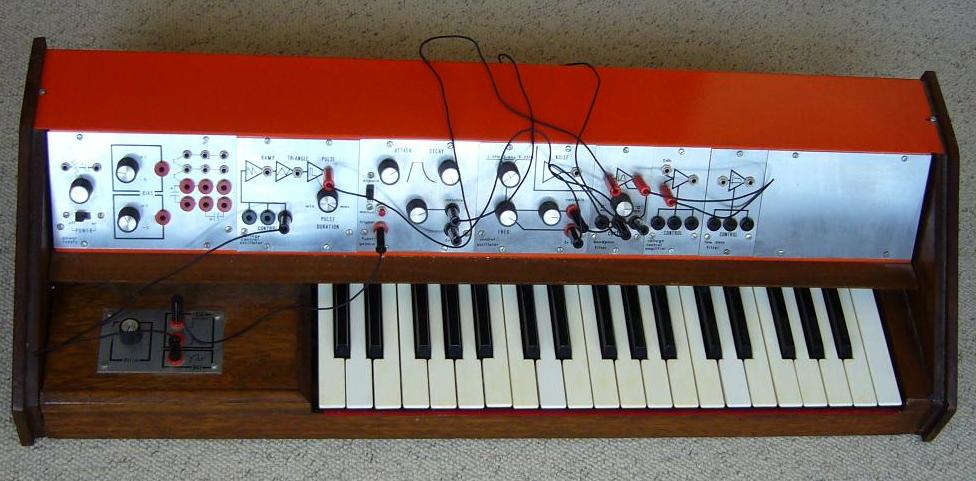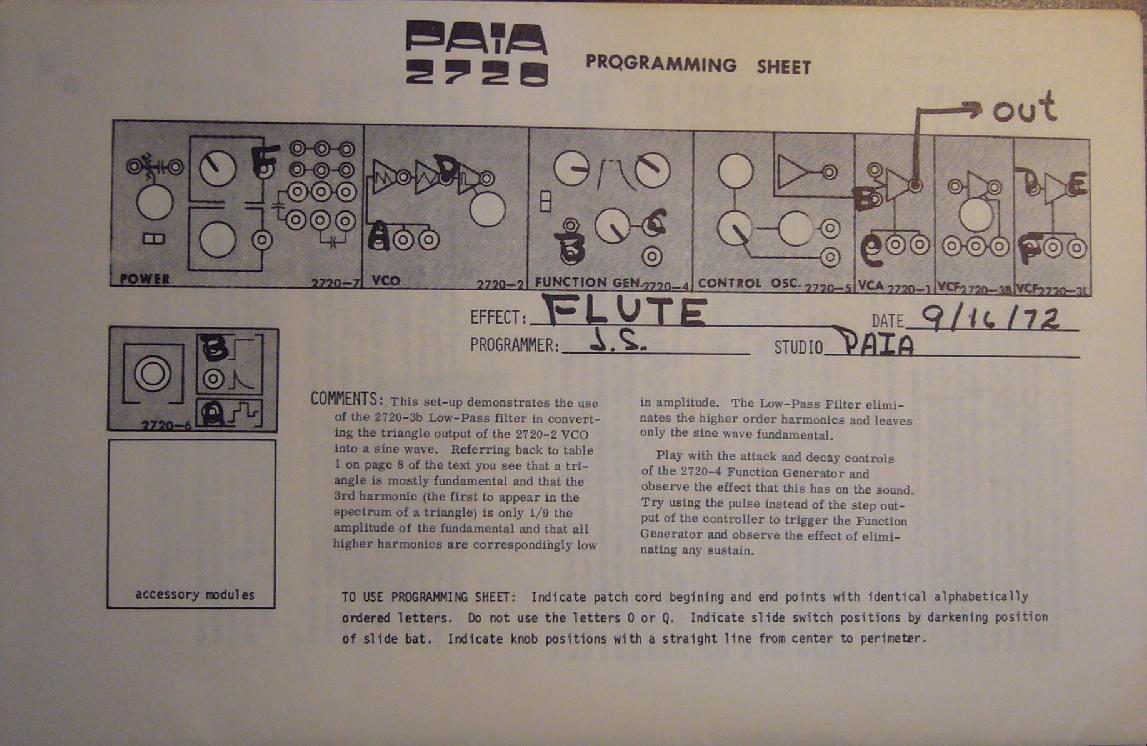 2720
Modular Synth (1974)
2720
Modular Synth (1974)  2720
Modular Synth (1974)
2720
Modular Synth (1974)

This is a very popular synth designed by John Simonton in 1972. The 2700 series was the first complete synth to be more or less self contained e.g. Power Supply, analog synth modules, and keyboard controller all in one package. Simonton developed the modular approach and began marketing Do-It-Yourself synthesizer kits in the late 60's. I purchased this kit in 1974 as one of my first forays into electronic music. It is strictly monophonic and is programmed using patch cords and audio cables to create a single patch. There are a number of controls to vary Attack, Decay, bias into filters, etc., but essentially after programming, you will be recording one patch at a time. At the time this was not a limitation, because this synth is pre-computer age and most recording was via tape.
It is a piece of history now, although it can be easily incorporated into a studio for nifty recording of bass lines or some wild electronic sounds. I haven't used it for years, but got it out just recently to record some of the sounds for posterity (now that recording is a piece of cake using computers). Here is an example of the Paia 2720 Modular Synth setup for a bass line. The samples were sequenced in a modern DAW, using a typical software sample player. Paia Bass Example.
To make a patch, John Simonton came up with a programming diagram form that could be used to record a patch map. By the way, this is how 'patches' got their name. Here is one of John's patch maps for a flute-like tone ...

The 2720 Modular Synth was widely advertised and many electronic magazines carried articles about this synth. At the time Electronic music was not consumer oriented, so the customer base was typically engineers and amateur radio enthusiasts. Musicians were slowly getting into this phase of music, but to safely program and operate these synths, some knowledge of electronics was almost essential. Simonton published a series of articles on the 2700 series in Radio Electronics. A larger selection of analog processing modules was available but the standard kit (my model 2720) included the following Components:
Power Supply - with variable outputs
VCO - Voltage Controlled Oscillator w/3 wave shapes
ASD - forerunner to the ADSR called a Function Generator
LFO - Low Frequency Oscillator w/ 3 bands and variable frequency
Noise generator
Band Pass Filter w/Q control
Low Pass Filter w/control
VCA - Voltage Control Amplifier w/ control
Keyboard Controller
Variable Pitch and Trigger shapes for the Keyboard Controller
Here's a close-up view of the Module Panel ...
There is a wealth of information about this synth available on the Internet, so reconstruction is highly possible. My 2720 still has all of the original manuals (one for each module and overall operation and assembly). The FreeinfoSociety is one source that has a wealth of vintage electronics manuals and is a great place to surf. I ended up with many duplicates of the manuals and can share these with others if there is a need. See photo below:
After dusting it off and firing it up, I found several small problems with my synth, but nothing that hurts the operation:
1. On the keyboard, the lowest 'B' key sticks a little.
2. The rubber foot in the front right corner is toast.
Other than this, I am enjoying playing around with a little bit of electronic music history. BTW: No MIDI involved or needed ... it hadn't been invented yet. Here's the setup:
copyright 2007 - Design Systems, Inc.